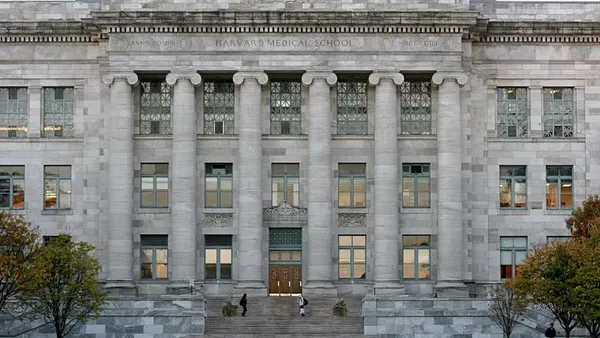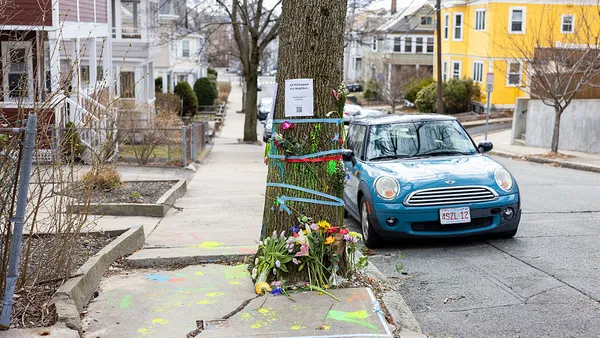Dive Brief:
-
State funding cuts cause modest decreases in graduation rates and college credentials awarded, according to a new report by the State Higher Education Executive Officers Association.
-
SHEEO analyzed empirical research to study how changes in state funding for public colleges and financial aid affected student outcomes.
-
The organization argues that investing in public colleges, which three-fourths of students nationwide attend, will be key as an economic recession stresses state budgets and exacerbates inequities in higher ed.
Dive Insight:
SHEEO found that 42 states decreased appropriations for public colleges' operations between 2001 and 2019, after adjusting for inflation. However, 34 states increased money for student grant aid during the same time period.
Public, four-year colleges tend to boost tuition to offset those reductions, the report stated. A 10% reduction in state funding to those schools leads to a 1.1% increase in enrollment-weighted tuition and a 0.7% increase in sticker price, with growth in the latter being slightly higher at state flagships.
Institutions also increase enrollment of out-of-state and international students to mitigate state cuts. These groups usually pay more to attend college than in-state students. State funding cuts cause in-state undergraduate enrollment to drop, with students who may have attended a public school instead enrolling at a for-profit college, the report states.
Schools that cannot raise tuition and fees by enough to offset state cuts instead look to reduce spending elsewhere, the most common cuts being in programs "essential for student success," according to the report. These include academic support and student services.
One study the report analyzed found that an increase in state money has a slightly bigger impact on graduation rates than does a decrease. A 10% uptick in appropriations per full-time equivalent student is associated with a 0.8% percentage point increase in graduation rates, while a 10% decrease is linked to a 0.6% percentage point drop in graduation rates.
College completion rates have continued to slow, according to data published late last year, a trend that could be exacerbated by the pandemic.
SHEEO notes that it may be hard for lawmakers to invest in public higher ed because of the stress on state budgets, though this was one of the organization's main policy recommendations for states.
On the federal side, it suggests lawmakers create a federal-state partnership to help boost college access for low-income students. It also recommended a federal program similar to Title I, which funds K-12 schools with high shares of poor students. President Joe Biden has proposed such a program for higher ed, and federal-state partnerships have been a feature of some recent proposals to make community college tuition free.














